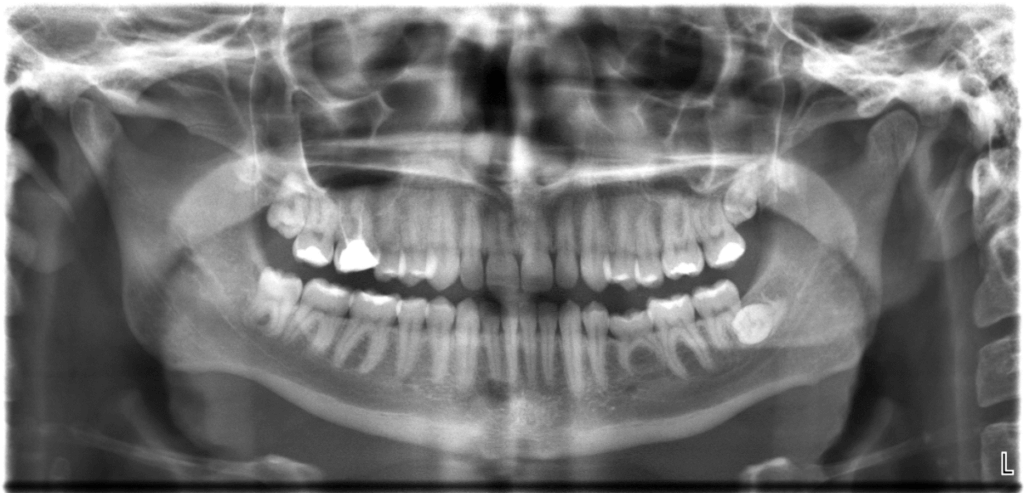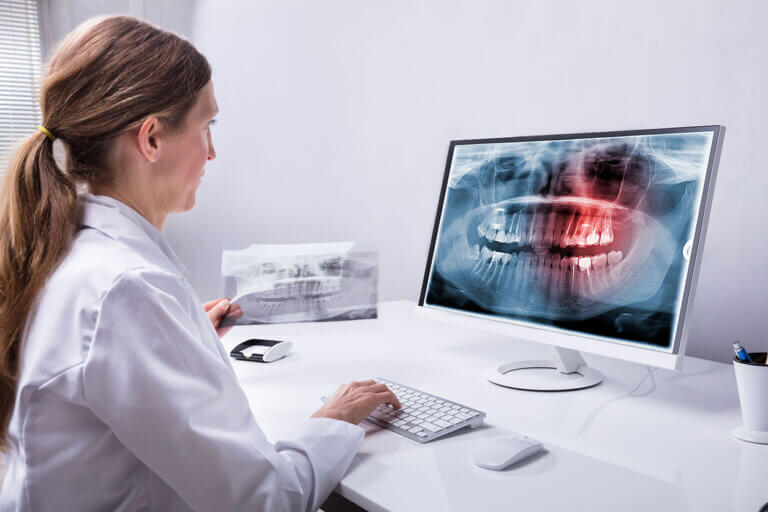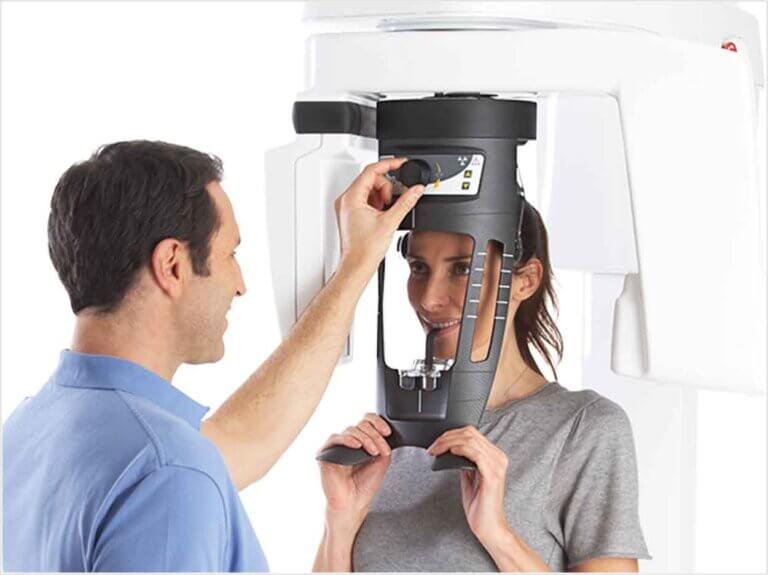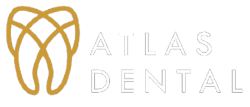Panoramic X-Ray

What Is A Panoramic X-Ray Scan?
A Panoramic X-Ray scan, also known as a Panoramic radiograph or orthopantomogram (OPG), is a specialized 2D dental X-Ray image that offers a sweeping view of the entire oral and maxillofacial region. By using a single X-Ray machine that rotates around your head, it captures a two-dimensional image of your teeth, jaws, temporomandibular joints (TMJs), and other structures in a single exposure. This single comprehensive image enables dental professionals to detect issues that may not be visible with smaller, traditional intraoral X-Rays.
Before you deciding on whether A Panoramic X-Ray Scan are right for you, there are some things you should know:
- Who Needs A Panoramic X-Ray Scan?
- Benefits Of A Panoramic X-Ray Scan
- How Much Does A Panoramic X-Ray Scan Cost?
- Steps In The Panoramic X-Ray Scan Procedure
- Alternatives to Panoramic X-Rays
- Frequently Asked Questions About Panoramic X-Rays
If you have any further questions about A Panoramic X-Ray Scan or other dental services offered at Atlas Dental, please contact us.

Free phone consultation
Have questions about Panoramic X-Rays? Schedule a free phone consultation with our Toronto dentist.

5 star google reviews
Our patients love us! See for yourself why more and more people are choosing Atlas Dental for their Panoramic X-Rays.

Book Panoramic X-Rays Scan Online
We provide quick and convenient Panoramic X-Rays Scan Service in Toronto. Book Online.
Who Needs A Panoramic X-Ray Scan?
Panoramic X-Rays are recommended for a variety of situations, including:
- New Patients: It helps establish a baseline for your dental health during your first visit.
- Routine Dental Check-Ups: Regular scans can monitor changes in your oral health and detect emerging issues.
- Orthodontic Evaluations: Orthodontists use panoramic images to assess tooth positioning and jaw alignment for braces or aligners.
- Wisdom Teeth Assessments: Determines the position and condition of wisdom teeth and identifies potential complications like impaction.
- Implant Planning: Assesses bone density and jaw structure for precise implant placement.
- TMJ Disorders: Evaluates the temporomandibular joints for abnormalities or degeneration.
- Trauma or Pathology Assessment: Helps detect fractures, cysts, or tumors in the oral region after injuries or during suspected conditions.
By utilizing Panoramic X-Ray scans, dental professionals can accurately diagnose various dental conditions and develop tailored treatment plans. If you have further questions about a Panoramic X-Ray Scan, please contact us.

Benefits Of A Panoramic X-Ray Scan
Panoramic X-Rays offer several benefits that make them a preferred diagnostic tool:
- Comprehensive Overview: Captures a wide view of the entire oral structure in one image.
- Time and Cost Efficiency: One scan replaces multiple intraoral X-Rays, saving time and reducing overall costs.
- Reduced Radiation Exposure: Emits less radiation compared to traditional full-mouth series X-Rays.
- Patient Comfort: Non-invasive and more comfortable, especially for patients who experience gagging with intraoral X-Rays.
- Early Detection: Identifies issues like decay, impacted teeth, cysts, and tumors early for better treatment outcomes.
- Enhanced Treatment Planning: Provides detailed insights for orthodontic, implant, or surgical procedures.
By utilizing Panoramic X-Ray scans, dental professionals can enhance their diagnostic capabilities, provide accurate treatment planning, and deliver high-quality dental care. If you have further questions about the benefits of a Panoramic X-Ray Scan, please contact us.
Cost of Panoramic X-Ray Images
The cost of a Panoramic X-Ray is $84. The codes relevant to dental x-rays in the Ontario Dental Association’s Suggested Fee Guide appear as follows:
Radiographs, Panoramic
- 02601 – Single images: $84
Dental X-Rays are considered a basic service under all dental insurance plans and should be covered to your maximum insurable limit, but be sure to find out from your dental insurance plan provider how much you are eligible for before going ahead with dental treatment. Our fees are consistent with the ODA Fee Guide.
For patients without dental insurance, Atlas Dental is pleased to offer dental financing through iFinance Dentalcard. Affordable payment plans start at 7.95% for terms of 6 months to 6 years. To learn more about Dentalcard dental treatment financing, follow this link.
What Are The Steps In The Panoramic X-Ray Scan Procedure?
The process of obtaining a Panoramic X-Ray scan is quick, painless, and straightforward:
- Preparation: Remove any jewelry or metal objects. A lead apron may be provided to protect other areas from radiation.
- Positioning: Stand or sit in the designated position, bite down on a bite block, and keep your chin steady on the rest.
- Imaging: The machine rotates around your head, capturing the X-Ray image in about 20–30 seconds.
- Image Review: The image is analyzed by your dentist to identify any issues and plan necessary treatments.
The Panoramic X-Ray scan procedure is non-invasive and painless, making it suitable for patients of all ages, including children and individuals with dental anxiety. If you have further questions about the process of taking a Panoramic X-Ray Scan, please contact us.

Alternatives to Panoramic X-Rays
Digital X-rays come in various types, each designed for specific diagnostic purposes:
- Intraoral X-Rays: These X-rays are captured from inside the mouth and include:
- Bitewing X-Rays: Show upper and lower teeth in one view, often used to detect cavities and examine dental restorations.
- Periapical X-Rays: Focus on the entire tooth from crown to root, helpful for detecting infections or root issues.
- Extraoral X-Rays: Captured from outside the mouth, these provide a broader view.
- Panoramic X-Rays: Offer a full view of the entire mouth, beneficial for examining jaw alignment, TMJ, and planning surgeries.
- Cephalometric X-Rays: Show a side profile, valuable for orthodontic planning.
- Cone Beam Computed Tomography (CBCT): Provides detailed 3D images of teeth, bone, and soft tissues, essential for complex cases like implant planning and oral surgery.
Each type of X-ray delivers a unique perspective on oral health, allowing dentists to build a comprehensive understanding of each patient’s needs. If you have further questions about Digital Dental X-Rays, please contact us.
Frequently Asked Questions About Panoramic X-Rays
- Is a Panoramic X-Ray safe?
Yes. Panoramic X-Rays use low-dose radiation, making them safe for most patients, including children.
- Can I get a Panoramic X-Ray while pregnant?
While X-Rays are generally avoided during pregnancy, exceptions can be made if the benefits outweigh the risks. Always inform your dentist if you are pregnant.
- How often should I have a Panoramic X-Ray?
Frequency depends on your dental health. New patients or those undergoing treatment may require it more often, while others may need it every 3–5 years.
- Does my insurance cover Panoramic X-Rays?
Most dental insurance plans cover Panoramic X-Rays as a basic service. Check your plan for specific details.
At Atlas Dental, we are committed to providing high-quality imaging and dental care. Whether you’re a new patient or need routine diagnostics, we’re here to help. Contact us today to learn more!

